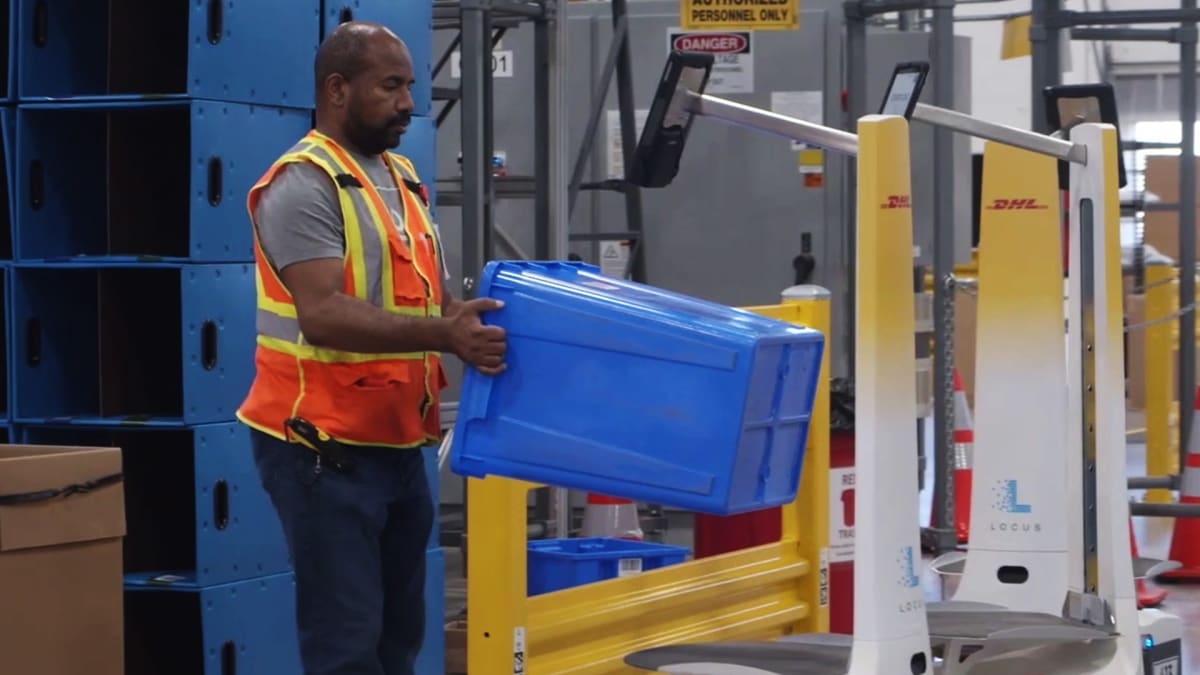
Artificial intelligence has dominated the headlines of late, with dire predictions that things like ChatGPT will steal our jobs, help criminals, and even ruin marriages.
Hard to believe that just a few years ago people were similarly ringing their hands over another doomsday-like technology. The robots! You didn’t forget about them, did you?
Amazon Inc. (AMZN) certainly didn’t. The e-commerce giant opened a fulfillment center in Windsor, Connecticut that heavily relies on robots to automatically sort smaller merchandise like books, toys, and electronics. The 3.8 million square foot facility also employs 2,000 human workers.
The small stuff is hard
The key phrase here is smaller merchandise. Such items have bedeviled online retailers because of the vast multitudes of quantities, sizes and shapes. By contrast, it’s much easier to sort and ship large merchandise because the products tend to come in more standardized boxes.
Finding ways to automate the process is crucial to cutting costs and boosting profit margins, which Amazon seems to be focusing on a lot lately.
Despite booming pandemic sales, Amazon still found it difficult to make money because operating a sprawling e-commerce system, especially one that offers one day or even one hour delivery, is pricey.
In 2022, Amazon reported a whopping $501.8 billion in total operating expenses, more than double just four years ago. As a result, the company’s operating income, which is how it measures profitability, fell 16% from 2020. North America actually lost $2.8 billion.
In his recent letter to shareholders, CEO Andy Jassy said the company struggled to fill online orders on time as its distribution systems grew bigger and more complex.
“This challenge became more pronounced as our fulfillment network expanded to hundreds of additional nodes over the last few years,” Jassy wrote, “distributing inventory across more locations and increasing the complexity of connecting the fulfillment center and delivery station nodes efficiently.”
To that effect, Amazon is reworking its network away from a centralized national system towards a model that relies on regional fulfillment centers to fill and deliver orders closer to consumers.
Are robots the answer?
But location is only one part of the puzzle. People order a lot of different things in different numbers at different times, which makes filling those orders, especially in tight delivery windows like one hour or same day, so challenging.
This velocity and complexity is why retailers are still struggling with incorrect orders, overpricing, out-of-stocks, and botched delivery times, said Louis Borders, founder of Borders Group and Webvan, the country’s first online grocery retailer.
Borders is founder and CEO of HDS Global, a Silicon Valley startup, that is developing a robotics technology platform called RoboFS to fully automate e-commerce.
“Placing different items in the right container is a hard robotics problem,” Borders said.
RoboFS consists of robots, gripping machines, and configurable containers/trays/cartridges that can independently receive, store, pack, and load merchandise of all sizes and shapes onto vehicles with little to no human involvement. HDS Global is currently partnering with Toyota Motor Corporation (TM) to develop this technology.
Automation is the only way retailers can make such a messy business that’s e-commerce more efficient and profitable, Borders said.
Amazon certainly seems to agree. Since buying Kiva Systems in 2012 for $775 million, the company has been heavily investing in robotics technology.
The company said it currently operates 520,000 robotic drive units and more than a dozen other types of robotic systems in facilities around the world, including sort centers and air hubs.
Some of the technology includes its Proteus mobile robot and Cardinal, a robotics system that uses advanced AI and computer vision to select one package out of a pile of packages, lift it, read the label, and precisely place it onto a cart.
“What started as an interesting acquisition has grown into a dedicated team of roboticists, engineers, software developers, ergonomic specialists, and other experts who have revolutionized our operations,” the company said. “They play an integral role in delivering the products our customers want, when and where they want them.”







